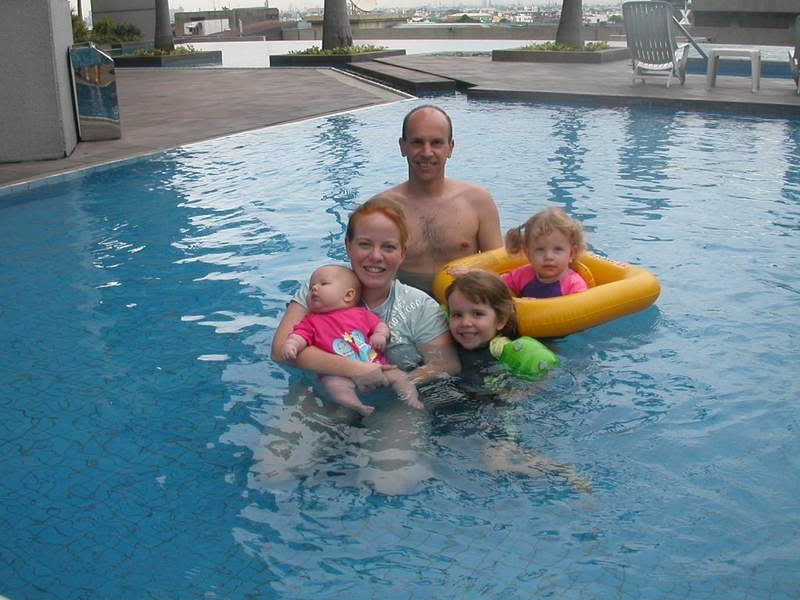Languages, Languages everywhere!
Another reason I love living in the Philippines is the multilingualism. While New Zealand is far from monolingual, my daily life in the ‘mainstream’ culture (apart from teaching & researching linguistics) was very much a monolingual one.
Here, our house is home to three daily languages! (Four, if you count the German grace that the girls love to sing before meals.) Coring, our driver, and our two yayas, Jenalyn and Myrna, are all trilingual. With us, they use English, but with each other, they use a mixture of Tagalog (the Philippine national language – also called Filipino) and Visayan. They all originate from the middle section of the country, where Visayan (also called Cebuano) is the lingua franca. Jenalyn actually comes from a different island from the other two, so her dialect of Visayan is sometimes called Boholano, but it’s close enough to the Visayan dialect spoken in Davao, where the other two are from, so there’s no barrier to understanding.
Both of the ladies speak Tagalog and Visayan with Tessa when they’re looking after her. Yesterday, Emily got quite concerned about this and said “Jenalyn, the baby doesn’t understand Tagalog!” We all laughed! I explained to Emily that babies don’t actually understand ANY language, unless they hear it often enough, so in fact, Tessa didn’t understand English yet either! I explained that Tessa was growing up hearing other languages, so when she starts speaking, she will be able to speak Tagalog, too, and not just English.
Well, Emily was quite taken by this idea, and asked Jenalyn to talk to her in Tagalog as well! So last night, over desert, we learned how to say ‘Do you like papaya?’ and ‘Yes, I do like papaya’ or (as in Zoe’s case) ‘No, I don’t like Papaya.’
I’m also enjoying being a (volunteer) guest-editor for a journal published by SIL and the Linguistic Society of the Philippines. I’ve worked on 3 articles thus far, and have enjoyed immersing myself in the linguistic research going on in different parts of the country. What I find fascinating is how the political history of a country is reflected in its current linguistic landscape.
The Philippines was a port for Portugese and Spanish traders for hundreds of years, and was also a key trading portal for the Malays and other Asians, like the Chinese. In some coastal areas, a creole survives (Chabacano), which originated from a trade language spoken by Portugese/Spanish traders in their ships. It has become ‘nativised’, now being a living language, and even has its own dialects in different parts of the country.
Some statistics show the Philippines to be one of the largest English-speaking countries in the world. The lingering status of English as an ‘official language’ in the Philippines reflects the fact that their latest colonizer still happens to dominate the world’s political landscape. Sure, English is spoken, but only in the big cities, and only as another lingua-franca on top of all the other languages. So rather than describing the actual linguistic practice of the people, such flashy statistics reflect more the Catholic approach to birth control here. (…for which the Spanish can be thanked!)


0 Comments:
Post a Comment
<< Home